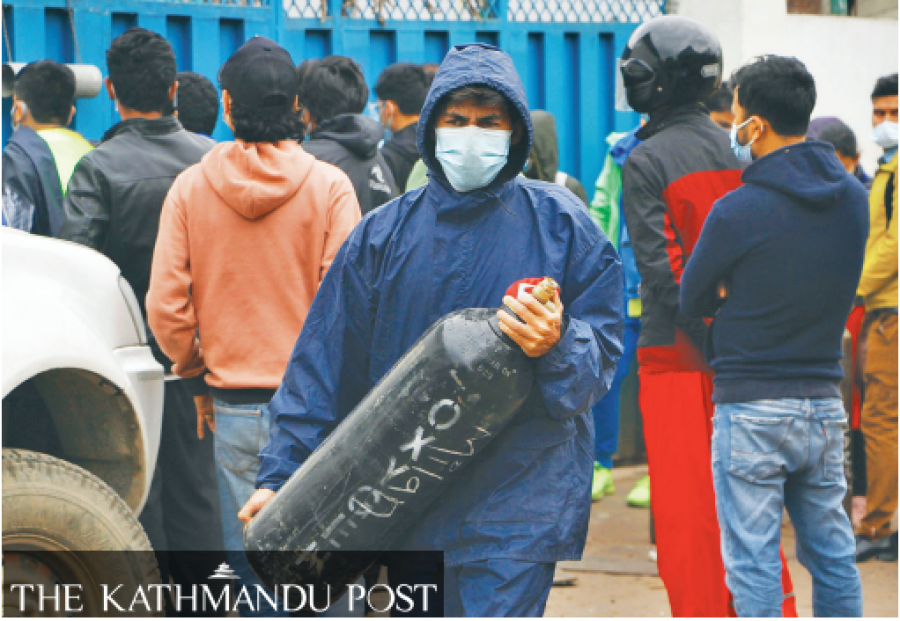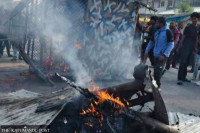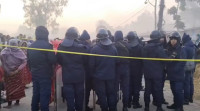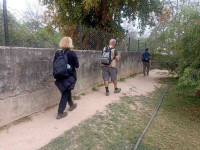National
Even after the second wave, officials failed to procure enough supplies, data show
Legal frameworks in place to fast-track emergency procurement were not used. Instead, the government relied on donations from other countries.
Prithvi Man Shrestha
While the second wave of the Covid-19 pandemic raged from April to June, nearly one in every two tests was returning positive, the country had run out of oxygen cylinders, hospitals had run out of beds and people were dying at home.
Lockdowns were imposed in infection hotspots across the country, including Kathmandu Valley, to break the chain of transmission. Restrictions on everyday life are also a time for authorities to prepare to face the pandemic by procuring medical equipment.
But, it turns out, for Nepal’s officialdom, it was business as usual. And the government relied almost exclusively on grants of equipment and other supplies from various governments and donors.
“Surely, the department failed to procure medical goods on time,” said an official at the logistic management division of the Department of Health Services, the government agency responsible for procuring medical equipment.
According to the details that the department made public on Friday, procurement during the second wave was mainly limited to polymerase chain reaction test kits and accessories while most of the country was on lockdown.
“We procured over 1,000 oxygen concentrators too. I am not sure why this was not listed,” said the official.
Before district authorities imposed prohibitory orders on April 29 in Kathmandu Valley and elsewhere, 100,000 reusable and disposable goggles, 5,000 PCR kits, and 200 oxygen concentrators were procured in April, according to the department.
However, the department official said various government hospitals were also procuring medical goods for themselves.
In contrast, the department’s data shows that the country received 4,126 oxygen concentrators, 6,945 oxygen cylinders, 13,820 dead body bags and 218 ventilators, among others from different foreign governments and domestic and international agencies during the period from April 14 to July 4.
It also received 1.7 million rapid diagnostic antigen test kits at the end of May.
The second wave of pandemic hit the country in April, and it stretched the country’s health system to the limit, with people struggling to find oxygen and hospital beds due to a massive surge in Covid-19 cases.
On May 11, Covid-19 cases spiked to 9,317, a record high for a single day since the pandemic hit Nepal in early 2020.
Even though oxygen therapy is a crucial tool to treat Covid-19 patients, the government issued a bid notice to procure oxygen supplies and accessories only on May 10. By then it was already too late to get them.
There was no response to the bid.
“High demand for oxygen-related goods globally, particularly in India, difficulty in delivery due to the lockdown and short period for bids may have contributed to suppliers not showing interest to supply oxygen cylinders and concentrators,” said the department official.
According to the bid document, half of the 1,000 oxygen cylinders the bid called for were supposed to be supplied within 15 days of signing the contract while the rest were to be delivered within 30 days.
Suresh Ghimire, president of the Chemical and Medical Suppliers’ Association Nepal, told the Post last month that suppliers saw difficulty delivering the consignment within the deadline due to the lockdown and suspension of international flights.
In order to deliver the goods within the deadline, suppliers would also need to charter a plane, a process that could take time.
The government then planned to buy 20,000 oxygen cylinders from China under a government to government deal. The cylinders took a while to arrive as the ones China manufactured were not compatible with the accessories available in Nepal.
Besides oxygen cylinders, ventilators are the other essential equipment to treat critical Covid-19 patients.
But the department was slow to procure ventilators too. The Ministry of Health and Population had ordered the Department of Health Services to immediately procure 50 ventilators in late April. The department issued a tender notice for ventilator procurement only on May 20. The deadline for bid submission expired on May 27.
As per the bid document, the supplier was required to deliver 25 ventilators within 10 days of signing the contract while the remaining 25 could be supplied within 20 days.
According to the department, the ventilators were supplied only in early July after the cases went down substantially.
Although legal provisions allow procurement to be fast-tracked, Department of Health Services officials do not seem to have noticed the urgency despite the pandemic raging and people dying.
“Even though the procurement law allows for shorter processes to buy goods during an emergency, we tended to follow the provisions of the normal situation, which also delayed the procurement of medical goods. During normal times there are provisions such as giving several days for unsuccessful bidders to make complaints,” the official said.
The existing procurement law allows the purchase of goods directly by fixing a specific timeframe.
As per section 41 of the Public Procurement Act 2007, the government entity can make direct procurement in exceptional circumstances.
In order to make direct procurement, a public entity has to invite a written rate or proposal from only one supplier, construction entrepreneur, consultant or service provider after preparing a written description as prescribed of the particular matter concerning its requirements and quality, quantity, terms and conditions and time of supply. In such procurement, there may be negotiations as required.
The law defines special circumstance as the situation resulting from a natural calamity such as drought, no rainfall, deluge, earthquake, flood, landslide and fire, and an epidemic or unforeseen or unexpected circumstance. This term also covers the circumstance of war or internal conflict.
Semanta Dahal, a corporate lawyer with expertise in public procurement, told the Post that the procurement authorities didn’t learn from the follies of the procurement failures of the first wave, and the mistakes were repeated during the second wave.
“The Covid-19 situation has now become a predictable emergency,” he said. “The best way to manage the procurement for a predictable emergency is by signing a framework agreement with the suppliers.”
According to him, such an agreement can be signed, making the supplier responsible for the supply in the future too when required.
“Framework agreements allow procurement authorities to issue a purchase order to procure goods to respond to imminent needs of a serious emergency,” he said. “Despite past failures, the practice of framework agreements has not been applied into practice.”
On May 20, the government also issued the Covid-19 Crisis Management Ordinance, which has eased the procurement of goods for the pandemic. As per the ordinance, the government authority can procure without preparing a procurement master plan or annual procurement plan. It can make advance payment without the necessary security guarantee. It allows the government agencies to procure directly without competitive bidding.
Covid-19 Crisis Management Centre has been authorized to facilitate the early procurement of necessary goods to combat the pandemic as per the ordinance.
“Concerned government agencies could themselves make procurement through a fast track mechanism as permitted by the ordinance,” Nurahari Khatiwada, spokesperson of the Covid-19 Crisis Management Centre, told the Post. “We can also facilitate if any government agency requests us. But so far, no government agency has made such a request.”




 18.12°C Kathmandu
18.12°C Kathmandu













%20(1).jpg&w=300&height=200)

